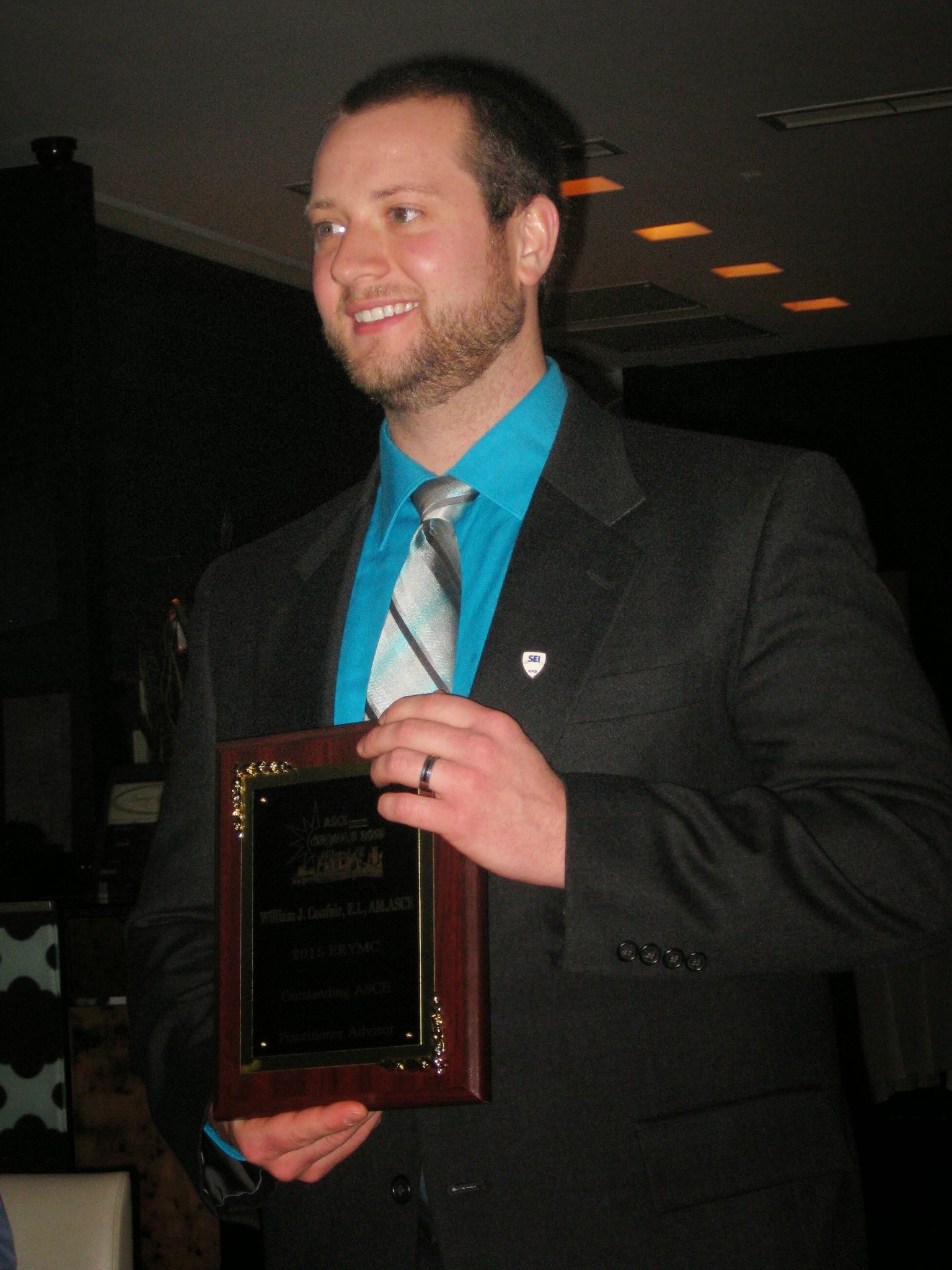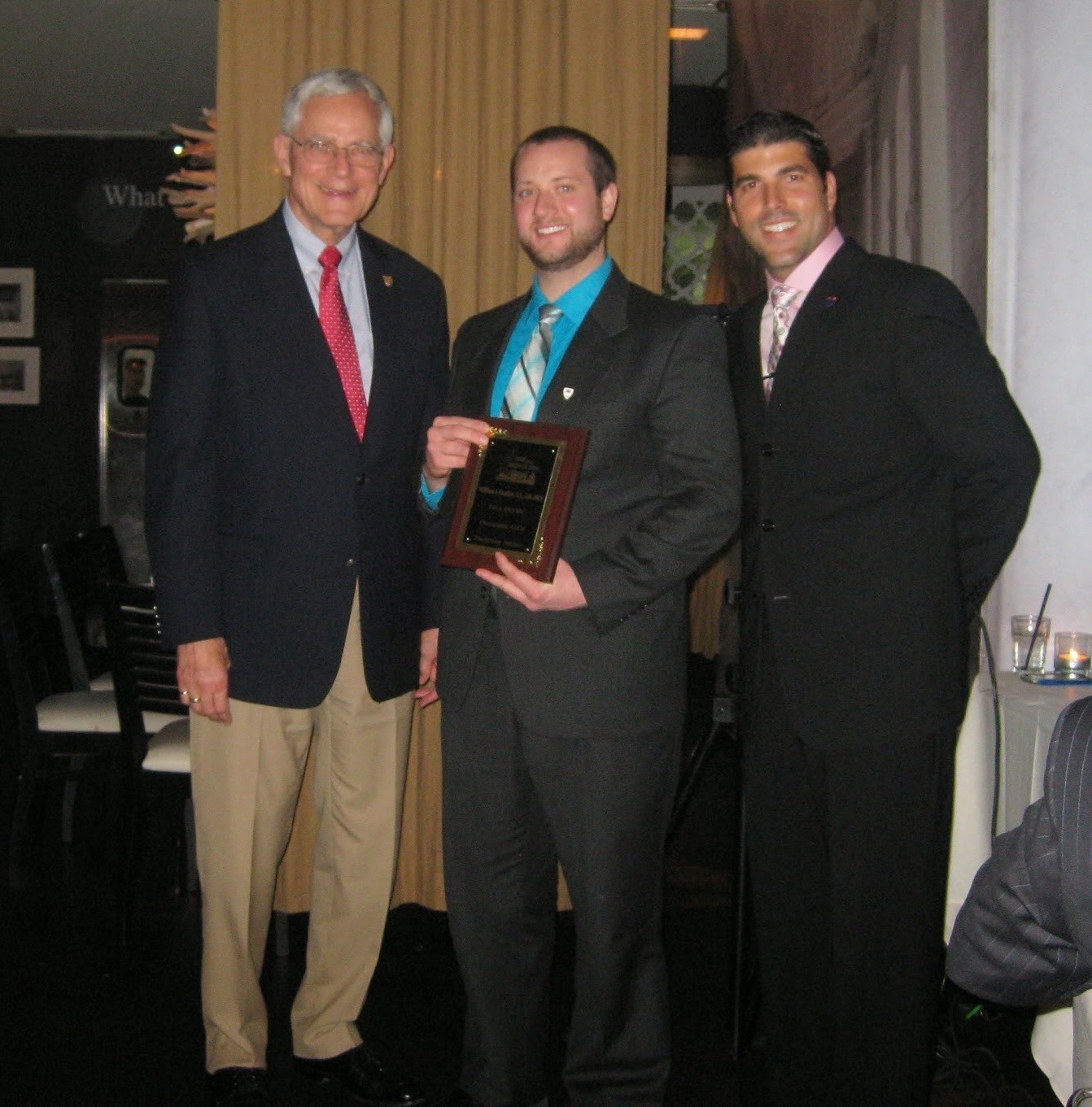Article by Linda Kaplan
 William J. Confair, PE, M.ASCE, won the 2015 Eastern Regional Younger Members Council Practitioner Advisor Award. This award is given to one Practitioner Advisor in ASCE Regions 1, 2, 4, or 5, which covers the Eastern third of the country. Bill was honored for his substantial efforts working with the University of Pittsburgh – Johnstown (UPJ) ASCE Student Chapter. He is an alumnus of UPJ having graduated with a Bachelor of Science Degree in 2010.
William J. Confair, PE, M.ASCE, won the 2015 Eastern Regional Younger Members Council Practitioner Advisor Award. This award is given to one Practitioner Advisor in ASCE Regions 1, 2, 4, or 5, which covers the Eastern third of the country. Bill was honored for his substantial efforts working with the University of Pittsburgh – Johnstown (UPJ) ASCE Student Chapter. He is an alumnus of UPJ having graduated with a Bachelor of Science Degree in 2010.
The UPJ student chapter had the honor of hosting the National Concrete Canoe Competition in June 2014. Starting in the Fall of 2013, Bill served as an advisor to the students planning committee and assisted the chapter with scheduling, coordination for fundraising, interaction with the Pittsburgh Section, securing volunteers, obtaining interest in local companies to attend the career fair, and correspondence with ASCE National. Additionally, Bill regularly coordinates and participates in panel discussion at the University covering a variety of topics including “What ASCE Can do for You” and “Post Graduate Options – Master’s Degrees vs. Employment.”
Bill is a Bridge Engineer with AECOM in Pittsburgh, where he has worked for 5 years. Signature projects include the rehabilitation of the South Tenth Street Suspension Bridge and the design of a new pedestrian bridge for the Montour Trail Council. He also serves as the current Technical Committee Chair for the YMF, organizing tours and speaker events.
Bill took some time to discuss the award and his experiences working with the student chapter.
Question: What did you think when you heard that you won the award?
I felt very grateful and honored that I had won the award. I put a lot of work into coordination with the students and the faculty advisor in order to have the students attend conferences, dinner meetings, and discussions.
Question: What have you learned from working with the students?
The biggest thing that I have learned from the students, essentially what piques their interests to get them involved in ASCE and attend events, is networking: Having the possibility to network and gain a potential internship or full time position.
Question: What do you tell students who are unsure if ASCE membership is right for them?
I tell them my personal experience when I attended the 2008 ASCE National Conference in Pittsburgh. It begins with my attendance and networking skills at one of the younger member events. I met with my future manager and discussed the possibility of an internship. It turned out to be a successful summer internship that ended with a full-time offer once I graduated. Without my involvement in ASCE, I would not have had this opportunity, nor would I be in my current position.
Question: What is your favorite or funniest memory of working with students?
My favorite memory while working with the students is a panel discussion in the spring semester. Our panel discussion occurred on St. Patrick’s Day and a couple of the presenters dressed up for the occasion. We definitely had some laughs and it lightened the atmosphere, which provided, in my mind, the best panel discussion that I have ever attended.
Question: What accomplishments, as either a mentor or engineer, are you most proud of?
I am proud of spreading my knowledge of engineering master’s degrees, among many other topics to students and junior engineers. Panel discussions are my favorite events, because I feel like I have a lot to share with students and junior engineers.
To learn more about ERYMC, visit the ASCE-National Website or visit the ASCE-Miami Website.

